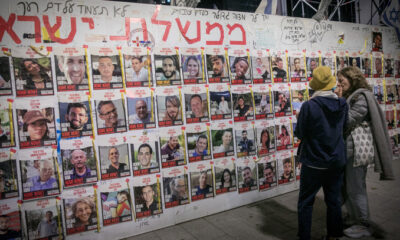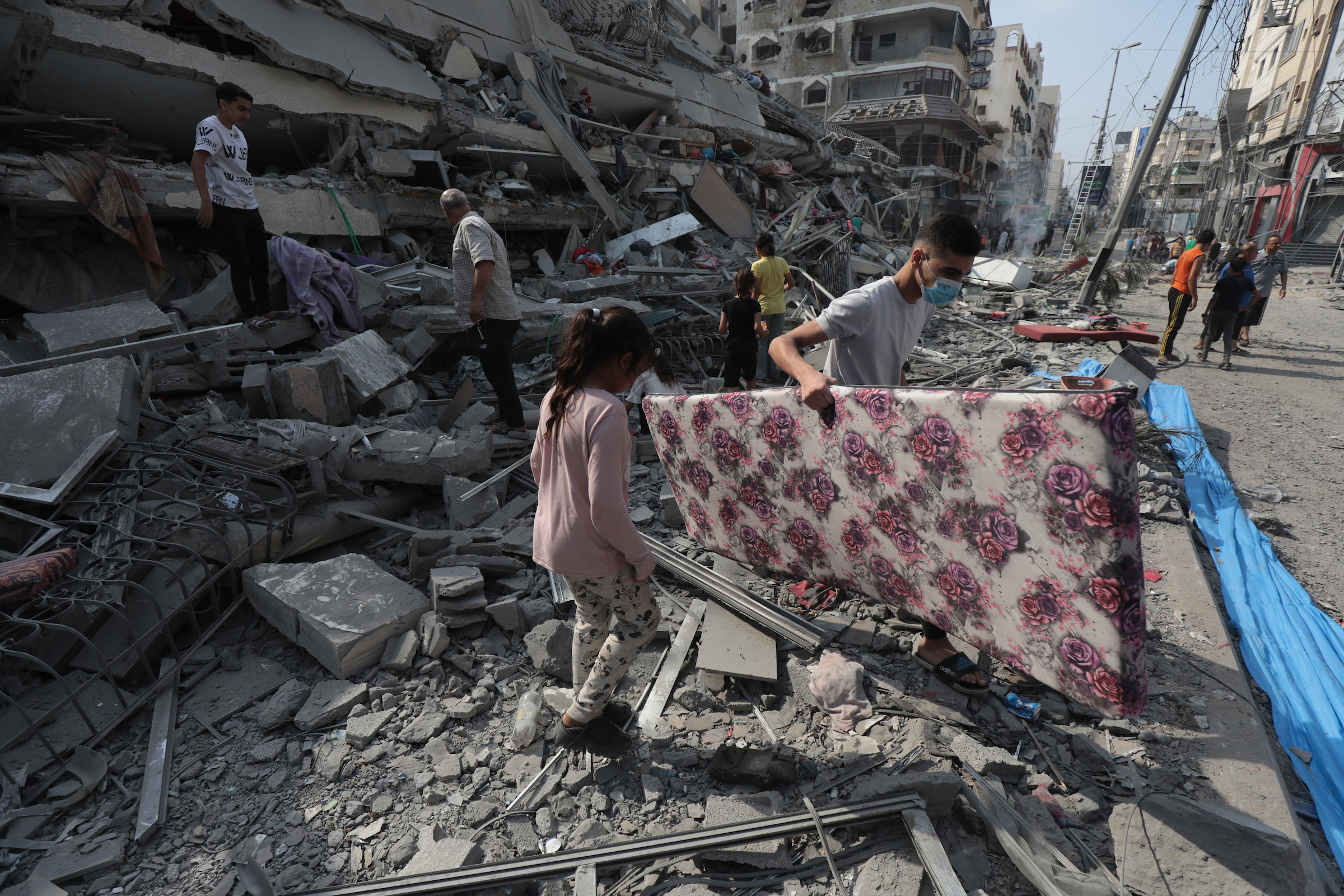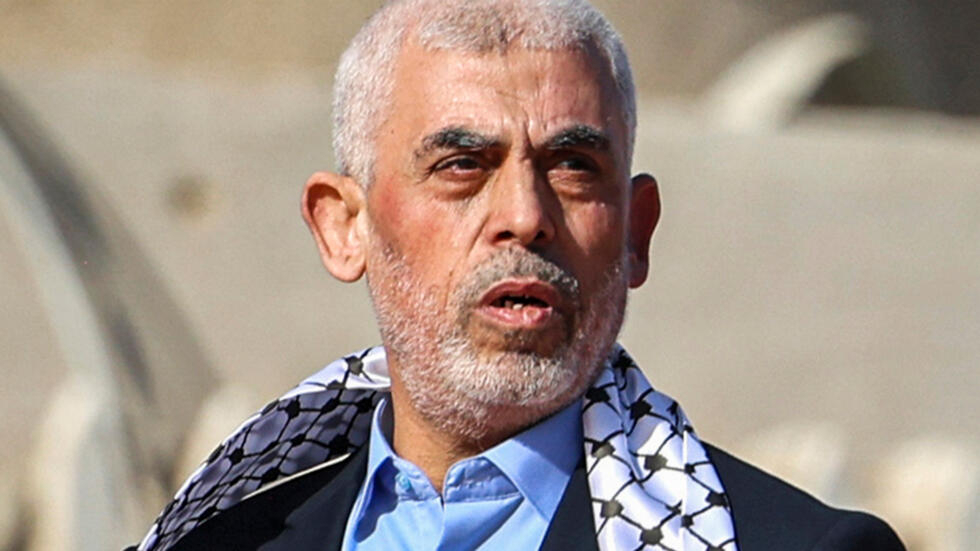World News
Gaza Hit by War Faces a Difficult Battle Against Polio

Given that this is the first occurrence of polio in the Gaza Strip in 25 years, medical professionals and humanitarian organizations are facing significant challenges in vaccinating large numbers of people in the conflict-torn Palestinian enclave.
The sustainability of a life-saving vaccination effort is threatened by Israel’s relentless airstrikes, which have been in effect for more than ten months, limits on aid entering the besieged zone, and the scorching summertime heat.
However, the region has already received equipment to support the massive campaign, which according to UN agencies might begin on August 31.
An unvaccinated 10-month-old baby from central Gaza tested positive for polio, according to tests conducted in Jordan, the Palestinian health ministry in the occupied West Bank announced last week.
Although type 2 poliovirus was found in samples taken from the territory’s wastewater in June, the UN reports that Gaza had not recorded a case in 25 years.
Since the Israel-Hamas conflict is continuing, sewage and tainted water are the most prevalent ways that the highly contagious poliovirus spreads throughout Gaza.
Children under the age of five are primarily affected by the condition. It is potentially lethal and can result in malformations and paralysis.
The World Health Organization (WHO) and UNICEF, two UN agencies, have announced that they have comprehensive plans to vaccinate 640,000 children in Gaza.
However, Israel’s catastrophic military campaign—which was set off by Hamas’s onslaught on the country’s south on October 7—remains a significant issue.
“Under a sky full of air strikes, it’s very difficult to carry out a vaccination campaign of this size and volume,” stated Juliette Touma, head of communications for UNRWA, the UN agency for Palestinian refugees.
After eliminated –
UN envoy in the Palestinian territories Richard Peeperkorn stated that the plan calls for 2,700 health workers in 708 teams to participate, with the WHO leading the initiative.
Spokesman Jonathan Crickx stated that UNICEF would maintain the cold supply chain while vaccines are transported into and dispersed throughout Gaza.
Refrigerators and other cold chain components arrived at Israel’s largest international airport on Wednesday.
Following would be about 1.6 million doses of the oral vaccination, which Crickx claimed are scheduled to go into Gaza on Sunday through the Kerem Shalom gate.
About 95% of Gaza’s youngsters under the age of ten will receive two shots each from the UN organizations, according to Crickx. Overdosage would compensate for anticipated losses due to heat or other factors.
Relief workers have long lamented the numerous challenges they encounter in delivering goods into Gaza, which has experienced acute shortages of everything from food to gasoline and medical supplies to medical equipment. However, Israel has consistently refuted accusations that it is obstructing help entering the enclave.
Furthermore, once in Gaza, secure access and delivery are made more difficult by violence, extensive destruction, and collapsing infrastructure.
“The return of polio to a place where it has been eradicated says quite a lot,” according to Touma, who worked on the response to the polio outbreak during the wars in Syria and Iraq.
According to the health ministry of the Hamas-run enclave, at least 40,223 Palestinians have died in Gaza as a result of Israel’s military action since October 7.
The UN human rights office reports that the majority of the dead are women and children, but it does not provide information on deaths by militants or civilians.
1,199 individuals died in Israel as a result of the Hamas strike that started the war, the majority of them were civilians, according to an AFP count based on Israeli government statistics.
“Safe atmosphere” –
According to Crickx, “only 16 out of 36 hospitals… still functioning, and only partially,” demonstrating the complete collapse of Gaza’s healthcare sector.
He said, “Of those, only 11 facilities are able to maintain the cold chain.”
The vaccines will be initially stored at a UN storage facility in central Gaza before being sent to UNRWA shelters, private and public health facilities, and “hopefully by refrigerated trucks if we can find some, otherwise by cold boxes” packed with ice packs, according to Crickx.
According to Moussa Abed, director of basic health care at the Gaza health ministry, many Gazans now reside in UNRWA schools or tented camps, making them difficult to approach.
During the conflict, almost all 2.4 million residents of the region have been moved at least once.
Two seven-day pauses in the fighting have been requested by UN Secretary-General Antonio Guterres in order to give dosages.
“We will not be able to reach 95 percent of the children under the age of 10, which is the goal of this campaign,” Abed stated, referring to the lack of a safe atmosphere for the vaccine campaign.
When contacted by AFP, COGAT, an Israeli defense ministry organization in charge of civilian activities in the Palestinian territories, stated that “a joint effort will be made together with the international community” on the issue of polio but did not specifically address the upcoming UN campaign.






